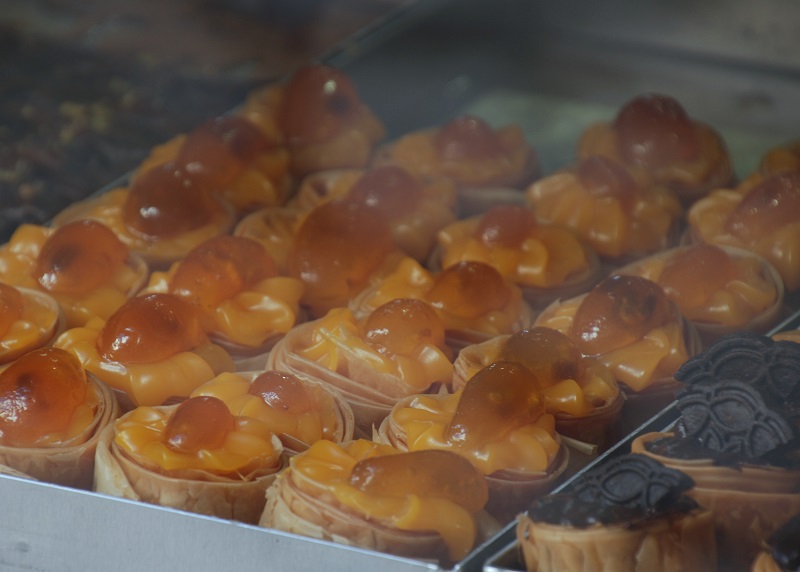There is just absolutely nothing to suggest, on the interminable windy road along the Save west of Sremska Mitrovica, that you are on your way to hallowed cheese ground. In the Netherlands, you will approach Gouda or Leyden through intensely green pastures with grazing cows, the occasional windmill, some farms and a bicyclist or two: you are in cheese country, and you know it! Traveling to the Zasavica Farm is not like that at all. In the fading light of a grey day, it’s actually a bit scary.
‘Farm’ is a bit of a misnomer. The place we found at the end of the road is a campground cum nature reserve cum pet farm. It encompasses a stretch of wetlands along Zasavica Creek, a small tributary of the Save River, which in turn meets the Danube at the Serbian Capital of Belgrade. There is great boating and birding (according to the website) and there is an opportunity to meet some native Serbian animals that have deep roots in the Balkans: there are swallow-bellied Mangulica Pigs and Podolian cows, both known to be hardy, disease resistant and not-to-be-messed-with. The pigs in particular – you would not want to meet them in a dark alley. And then there are the Balkan donkeys, which is where the cheese comes in.

In very small quantities, the donkey produces a sort of supermilk. Cleopatra and a host of Roman empresses bathed in the stuff, and French king François I had some miracle medicine made from it by a doctor from Constantinople. It is full of protein, low in fat, has no bacteria, lots of vitamins and it just overall has the potential to radically change your life. The folks that run Zasavica clearly studied their ancient history and at some point decided to begin milking: first the donkeys, and then the milk’s legendary reputation. In tiny amounts, the cheese made of this milk is available in fine restaurants in Belgrade and select other places in the world, and you can also just drive to the end of the world and get it there.
We arrived late enough in the afternoon that everyone seemed to have called it a day, except for two young dogs with murder on their minds. The two teenagers I traveled with were immediately attacked but since the dogs were still very young and generally friendly, the damage stayed limited to a tiny hole in a coat. We looked around a small stable with The Donkeys and assorted other semi-domesticated ungulates, until a man well into his sixties with big hands and a red face arrived. I started to explain what I had come for, but he looked me up and down and needed no explanation. He gestured me to come to the entrance booth of the campground and disappeared through the narrow door in the back. I stepped around and from a hotel minibar fridge, he took out a small gold box. I stuck out a fifty euro bill, which he swiftly crumpled into his pocket with an approving grunt. His body language made clear that there was no change to be had. I picked up the little box which was alarmingly light, nodded goodbye and we were off, to our hotel in Belgrade.

A few days later, in Višegrad, a small town in Bosnia and Herzegovina (BiH, as it says on the car stickers), my two travel companions and I gathered to divide the spoils of our expedition. We cut up the small, barrel-shaped cheese and tucked in. It is appropriate here to point out that said travel companions had no interest in the cheese, were tired and generally much more interested in making sure the Wi-Fi was working in the Airbnb we had rented. ‘Fine’ was their rather devastating assessment of the world’s most expensive cheese (Pule, as it is called, retails indeed for 1 euro per gram).

I suspect that ‘fine’ would have been the assessment of any food they would have been offered from a small gold box by the person who shelled out that much money for it. The young men pretty much knew what was expected, and they delivered the most minimally required response. I thought the cheese tasted very clean, the whole point of it being that there aren’t very many bacteria in the milk to give it a strong flavor. It had one of the smoothest, supplest textures I have ever enjoyed and the taste reminded me vaguely of almonds. The flavor didn’t linger in my mouth, as it does with most good unpasteurized cheeses. So Pule did not score any points there.
Of course, the big, the ultimate question is: after having savored Pule, would I pay this much money for it ever again?
Would I?
Hhhmmm.

































































